Every child gets stuck on a word once in a while as they learn to read. As a teacher or parent, it can be a little upsetting or frustrating to watch a student struggle – because we want them to be successful!
But guess what? It’s in those stuck moments where tons of growth happens!
Kids are all different, though. Some will become frustrated or expect an adult to tell them the word. Some will try a decoding strategy – and that’s what we want!
By teaching our students decoding strategies, we equip them to be persistent problem-solvers and tackle those tricky words.
In this post, I’ll share 9 specific things you can do when you’re reading with a student and they get stuck on a tricky word!
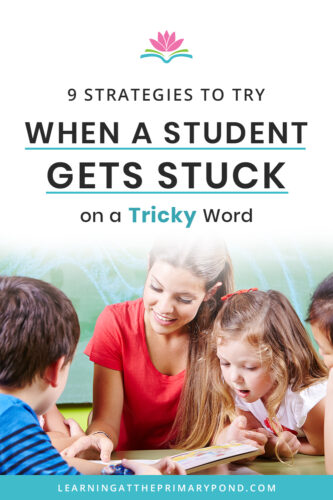
Strategy #1: Wait.
When we see a child struggling, it’s tempting to jump in to try and “rescue” them. But when they’re reading independently, they’re not always going to have an adult there next to them!
So when I see a student struggling with a word, the first thing I do is wait! I wait to see what they’re going to try. I let them struggle a little bit. I keep my eyes on the word. Sometimes I nod and smile at the reader encouragingly.
Often they’ll figure out the word all by themselves! If they seem super frustrated, I can always tell them the word or move onto one of these next strategies.
Strategy #2: Prompt the student to “say the sounds and blend.”
This is the first decoding strategy I teach my students! As soon as they start learning the letter sounds, we work on blending. For example, once they know the sounds for the letters s, i, t, they can blend to read the word “sit” by saying /s/ /ĭ/ /t/, sit. (This is what most people mean when they say “sound it out.”
Of course, for this strategy to work, the student must know the sounds represented by the letters in the tricky word. If a child hasn’t learned, for example, that the letters “oa” can make the long o sound, then blending to read isn’t necessarily going to work. If you’re going to give a student this prompt, make sure that their phonics knowledge is sufficient so that they can be successful with the word.
For more tips and tricks for teaching blending, check out this post.
Strategy #3: Prompt the student to “say the sounds they do know.”
If the tricky word contains sounds that the student doesn’t yet know, have them at least say the sounds that they do know.
If the word is boat, you might prompt them to say the first sound and the last sound. You can tell them, “oa says /ō/ in this word.” Then, they’ll (hopefully) be able to use that knowledge to read the entire word.
With this strategy, you’re still getting the child to do some of the work, even if you have to fill in certain gaps.
Strategy #4: Tell them the sounds and have them blend.
If Strategy #2 and #3 don’t work for the student, you can say the sounds yourself. For example, if the word is “sheep,” you say: “/sh/ /ē/ /p/.” See if the child can say “sheep.”
It’s also helpful if you point to the letter or letters that represent each sound as you say the sounds.
Strategy #5: Ask them to break up the word into chunks or syllables.
This strategy is great for readers who have a good amount of phonics knowledge and are beginning to read more challenging words – sometimes with more than one syllable.
There are different ways to have kids apply this strategy. Here are a few examples:
- If a reader gets stuck on the word “sand,” model covering the letter “s” which leaves the word “and.” They will likely recognize “and.” Last, ask them to put the /s/ sound with /and/ to read the entire word.
- If a reader gets stuck on the word “playground,” they might recognize the first syllable immediately (play). But if not, you can direct them to look at the beginning blend (pl) and blend that with the “ay” vowel team (long a sound). Next, move onto “ground.” Help them notice the beginning blend in the syllable (gr), the diphthong “ou,” and the ending blend “nd.” They can blend to read the second syllable, and then put the syllables together to read “playground.”
Note: the process described in the second example can take a while. You might choose to do it with one word per text (perhaps if you’re a teaching a guided reading group you do it with the entire group), but you wouldn’t want to spend tons of time going through that process for every tricky word. Otherwise, the reader may end up frustrated by the slow pace and lose track of the meaning of the text.
Strategy #6: Prompt the reader to “try a different sound.”
I primarily use this strategy for the vowels, since English vowels are tricky! (But it can also be used with other sounds, like hard and soft g and c.)
Here’s one example: the “ea” vowel team can make either the short or long e sound.
For example, if a child misreads the word “bread” as “breed,” with a long e instead of a short e, prompt them to “try a different sound for ea.”
Strategy #7: Prompt them to cover the ending or tricky part.
I love using this strategy when we begin working on inflectional endings like -ing and -ed! (Example: “playing”)
Sometimes students feel intimidated by a longer word. So I teach them to take their finger and cover up the ending so they can focus on the base word. In the word “playing,” they would cover up “ing.” They would read the word “play” and then add “ing.”
This strategy can also be used with prefixes found at the beginning of a word. For example, in the words “reuse” and “unkind” we can teach students to cover up the prefix and decode the base word first.
Advanced readers might need to cover both the beginning and ending of a word to discover the base— like in the word “restocking.” (This is similar to Strategy #5!)
If you’re looking for extra ways to practice inflectional endings, check out my No-Prep Phonics Games for 2nd Grade specifically on this skill! And for 1st grade, I have decodable readers for inflectional endings. Both good options!
Strategy #8: Prompt them to think about similar words.
Most words in English follow some kind of pattern. If a student knows a word that’s similar to the tricky one, that can help them.
For example, if a student gets stuck on the word “bright,” you might ask, “Are there any other words you know that remind you of this word?” They might think of “right” or “light.” Or, you might provide an example if they can’t think of one.
This is not a strategy I use as often as the others, but it can still be helpful in specific cases.
Strategy #9: Prompt them to give it their best effort and keep reading. They can come back to the word later.
Sometimes these strategies aren’t going to work. There are some challenging “rule breaking” words in the English language!
So I teach my students to try several strategies, and if they’re still not sure, just pronounce the word the best they can. Then, they can keep reading and come back to the word after finishing the page or paragraph. (Sometimes their brain just needs a break, or sometimes the content of the text will help them realize what the tricky word was.)
Teaching this strategy means that you’re not always going to intervene when a reader has trouble with a word. Yes, we want to provide supportive teaching and plenty of modeling. No, we don’t want them to become extremely frustrated. But we can’t always swoop in to “rescue” our students, because they aren’t always going to have the help of an adult reader when they’re reading on their own.
As long as you’ve provided effective decoding and phonics instruction, allowing kids to “handle” a tricky word without your help can actually be empowering. It communicates to them that you have confidence in their reading abilities!
Conclusion
When you’re supporting a student with using reading strategies, don’t forget that modeling comes first! You might tell them “try a different vowel sound,” but they won’t exactly know what that means until you model it. (Sometimes until you’ve modeled it several times!)
And of course, developing strong decoding skills requires that students receive strong phonics instruction. If you’re looking for a multi-sensory, engaging phonics program for Kindergarten, first grade, or second grade students, check out From Sounds to Spelling. You can grab a free week of the program HERE!
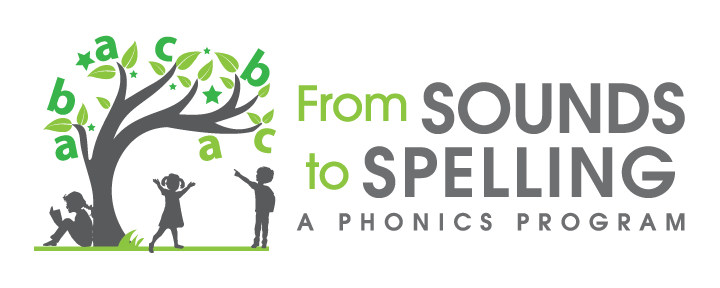
Or, if you’d like some decoding strategy visuals (plus comprehension and fluency visuals), my reading workshop toolkits include tons of posters and strategy cards. You can check them out here:


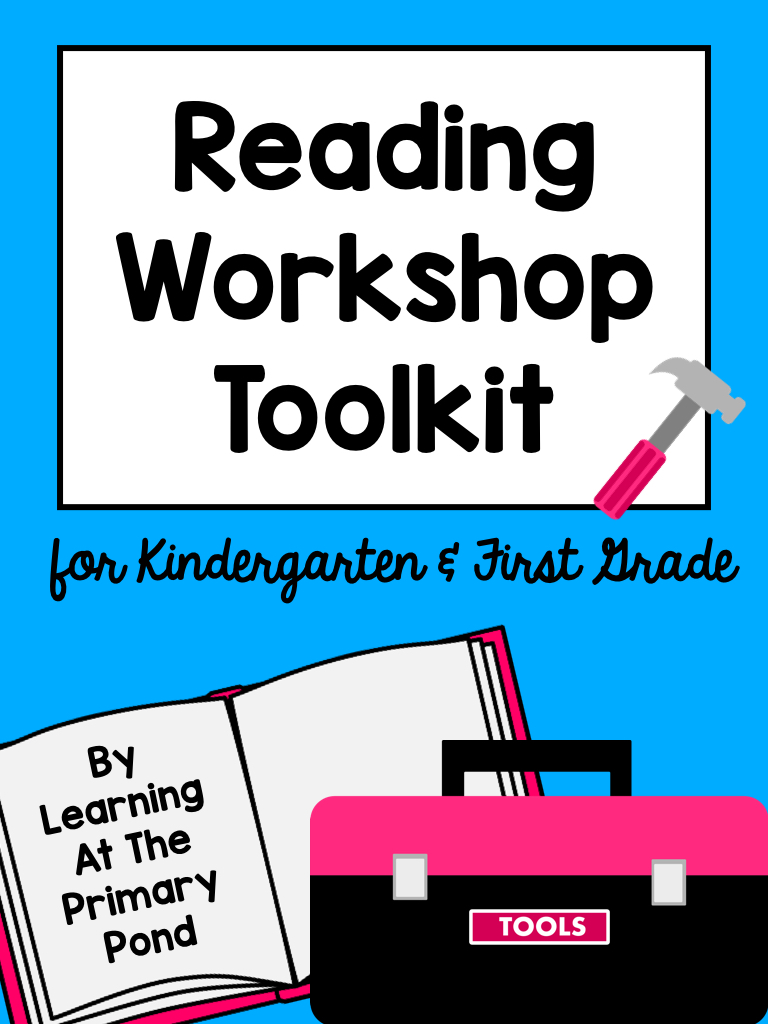
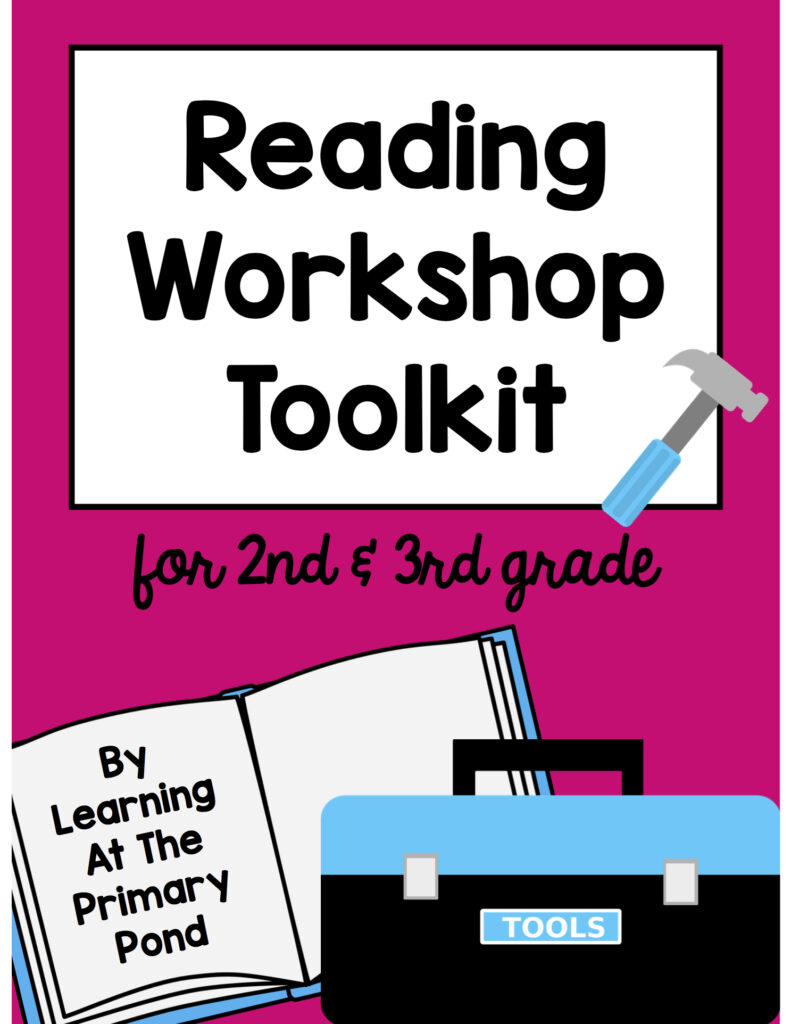




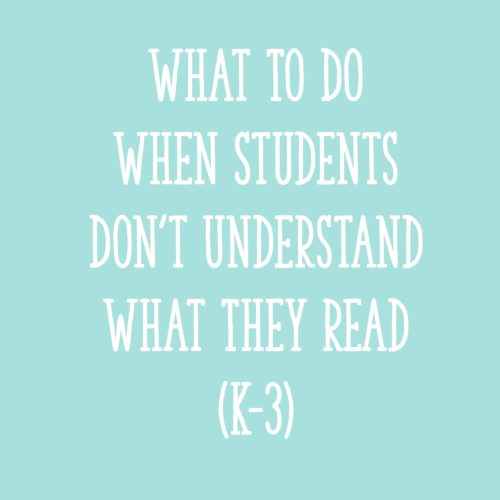
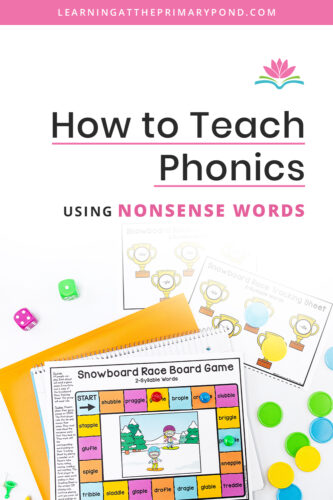






Excellent strategies and tips for all readers! Thank you.
Thank you!
Thank you so much for sharing these strategies. They will surely help me a lot in guiding my 5-year old daughter to read.
That is so wonderful to hear!!
Alison, I love these reminders. Do you have a printable with these reminders?
No, not with these strategies, but that’s an excellent idea! Thank you for your suggestion!!
I am membership to the literacy club does that include phonics program or is that seperate?
Hey there! The literacy club does not include the phonics program. It covers many of the same topics, but not the entire program!
The “Wait” strategy is so hard as a teacher! But the look on their faces when they do get the word is worth the wait. 😊Great ideas, as usual!
Totally!
Thank you for providing a number of strategies.
You’re so welcome!